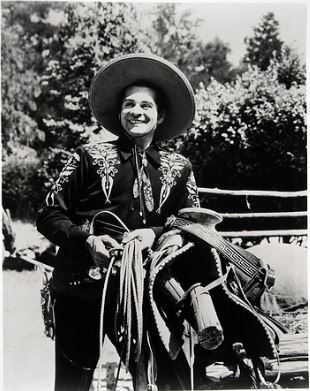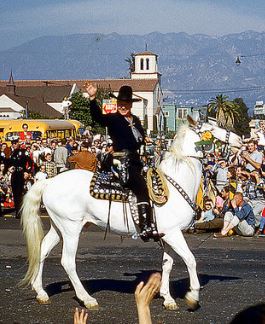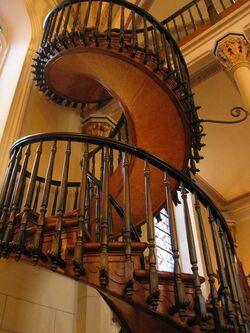
This isn’t really a Christmas story, but since Christmas is a time of miracles, I thought you might enjoy hearing of just one of them—or hearing it again, if you’ve heard it before.
You may know that I grew up in Albuquerque, New Mexico. My family moved there when I was eight years old. I have a distinct memory of my dear father telling us that we would see cowboys and Indians when we arrived there. We had television back then. (I’m not that old, thank you very much!) Ahem . . . . I watched Saturday afternoon westerns like every other little kid in America. The Cisco Kid, Roy Rogers, Hopalong Cassidy and the Lone Ranger and Tonto were weekly fare. And, if that weren’t sufficient, Princess Summerfall Winterspring appeared on Howdy Doody. So I knew all about my cowboys and Indians.
You may know that I grew up in Albuquerque, New Mexico. My family moved there when I was eight years old. I have a distinct memory of my dear father telling us that we would see cowboys and Indians when we arrived there. We had television back then. (I’m not that old, thank you very much!) Ahem . . . . I watched Saturday afternoon westerns like every other little kid in America. The Cisco Kid, Roy Rogers, Hopalong Cassidy and the Lone Ranger and Tonto were weekly fare. And, if that weren’t sufficient, Princess Summerfall Winterspring appeared on Howdy Doody. So I knew all about my cowboys and Indians.
In those days, there was no interstate leading through the city. You drove into town on U.S. Route 66 and went right through the middle of downtown. We made it clear to the other side of town and I hadn’t seen even one Indian, much less a single hitching post to indicate the presence of a cowboy—much less, his horse. WTF??? So of course I asked the Font of All Wisdom in my family. Dad had ALL the answers. But Dad’s answer was NOT cool. Dad had failed me. It seemed that, by 1956, cowboys and Indians drove pickups into town.
What does all this have to do with the Miraculous Staircase? Almost nothing except to tell you how gullible I was as a child. (It's my dear husband's contention that I still am.) So, what of it? I’m a fiction writer. I can be gullible and it simply looks like part of the persona.
What does all this have to do with the Miraculous Staircase? Almost nothing except to tell you how gullible I was as a child. (It's my dear husband's contention that I still am.) So, what of it? I’m a fiction writer. I can be gullible and it simply looks like part of the persona.
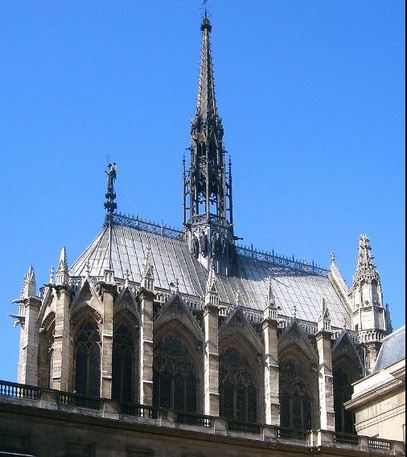
A long time ago, in 1610 to be exact, La Villa Real de la Santa Fe de San Francisco de Asís (the Royal Town of the Holy Faith of St. Francis of Assisi) was founded and designated the capital of the province of Nuevo México by Don Juan de Oñate. As you may assume—you should if you haven’t already done so—a lot of history occurred between 1610 and 1851. That was the year Jean Baptiste Lamy arrived. In 1853 he became the bishop of New Mexico, Arizona, Utah, and Colorado. He built Saint Francis Cathedral and brought the Catholic Faith to the people of the Southwest territories. Bishop Lamy sought to bring an educational system to this new territory and began a letter-writing plea for priests, brothers and nuns to come to the territory to preach and teach. The first acceptance of his general plea was from the Sisters of Loretto.
In 1852, the sisters arrived in Santa Fe, and opened the Academy of Our Lady of Light (Loretto) in 1853. Despite smallpox, tuberculosis, leaky mud roofs and even a brush with rowdy Confederate Texans during the Civil War, their school flourished. Through tuition for the girls’ schooling, donations and from the sisters’ own inheritances from their families, they built their school and chapel. Bishop Lamy brought architect Antoine Mouly and his son from Paris to Santa Fe to design and build, not only St. Francis Cathedral, but also to build the Loretto School and chapel. Monsieur Mouly set his exquisite chapel, resembling King Louis IX’s Sainte-Chappelle in Paris, at the end of the Santa Fe Trail.
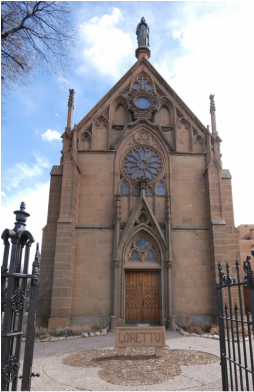
The small chapel, only 25 feet by 75 feet, and reaching a height of 85 feet, was completed in 1878—that is, all except for a staircase to reach the choir loft, twenty-two feet above the chapel floor. An error had been made in the chapel’s design. After consulting with territorial carpenters, the sisters learned that there was no solution to the problem of providing one without interfering with the seating space inside the small chapel. The carpenters suggested using a ladder.
Instead, to find a different solution, the nuns decided that their only recourse was to pray. They made a Novena to St. Joseph, the patron saint of carpenters. On the ninth and final day of prayer, a scruffy, gray-headed stranger appeared at the door looking for work. With him he brought a donkey and a toolbox full of tools. The man offered to build the necessary staircase, but he required two things in return. Mother Magdalene, the superior, was never to reveal the name of the carpenter and he wanted to be left in seclusion while he worked. (It’s an interesting fact that, even upon her deathbed, the mother superior refused to divulge the carpenter’s identity.)
His work was completed quickly, according to the sisters’ reports. Several of them cracked the chapel door open and watched him, but nobody ever spoke with the man and nobody ever disturbed his work. He used a saw, a T-square and a hammer, but no other tools. He worked continuously and, when he was finished, he sought out Mother Magdalene to approve his work. During the sisters’ excitement of viewing their new marvel, the carpenter disappeared—and never sent them a bill.
Instead, to find a different solution, the nuns decided that their only recourse was to pray. They made a Novena to St. Joseph, the patron saint of carpenters. On the ninth and final day of prayer, a scruffy, gray-headed stranger appeared at the door looking for work. With him he brought a donkey and a toolbox full of tools. The man offered to build the necessary staircase, but he required two things in return. Mother Magdalene, the superior, was never to reveal the name of the carpenter and he wanted to be left in seclusion while he worked. (It’s an interesting fact that, even upon her deathbed, the mother superior refused to divulge the carpenter’s identity.)
His work was completed quickly, according to the sisters’ reports. Several of them cracked the chapel door open and watched him, but nobody ever spoke with the man and nobody ever disturbed his work. He used a saw, a T-square and a hammer, but no other tools. He worked continuously and, when he was finished, he sought out Mother Magdalene to approve his work. During the sisters’ excitement of viewing their new marvel, the carpenter disappeared—and never sent them a bill.
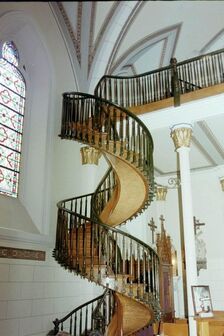
Architects, carpenters and disbelievers all wondered exactly who the craftsman was and where he’d purchased his materials. Every lumber yard in New Mexico was approached and questioned, but to this day, nobody has ever come up with an invoice. Nobody ever learned the name of the genius who designed and built the stairs to the loft, and they never identified the type of wood used to build the staircase. All they know is that it is foreign to the United States. The staircase is twenty-two feet high and has thirty-three steps forming two complete circular turns of 360 degrees each—all without a center support. There were absolutely no nails used in its construction. The entire construction is held together by wooden pegs. The hardwood is spliced in seven places on the inside and in nine on the outside. Each piece forms a perfect curve.
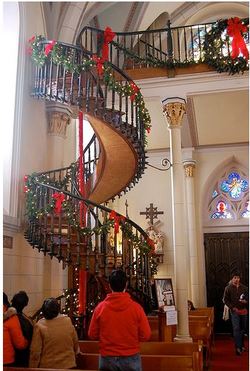
The Sisters of Loretto must have beamed with pride when they recalled that Saint Joseph answered their prayers and lovingly came himself to build their precious jewel.

